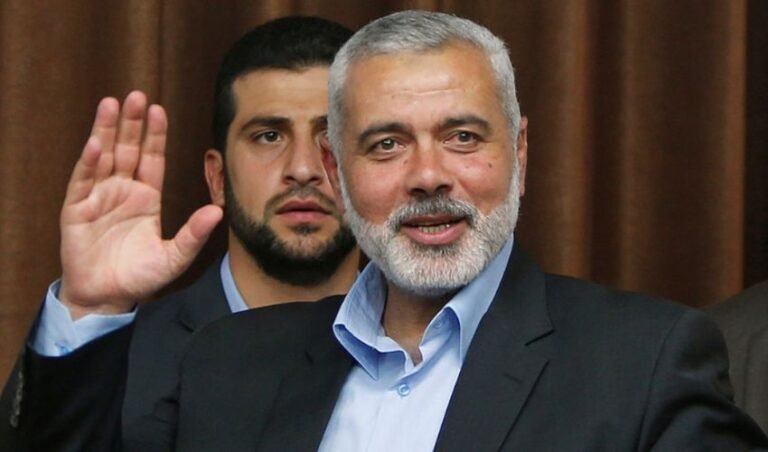The Overview
Iran launched its first major military strike against Israel, the first time the two countries have directly confronted each other. Previously, the two countries agreed to maintain their war in the shadows via the use of proxy groups. However, the latest attacks breaks lore from the established rules of engagement between the two. Israel attacked the Iranian embassy in Damascus, and Iran responded by firing more than 300 drones and missiles at it. According to reports, most of the projectiles were shot down thanks to assistance from the west and, surprisingly, Jordan and Saudi Arabia. Is this the beginning of a new Middle East, or is it only a marriage of mere convenience?

The Role of Iran’s proxies
Iran projects influence throughout the Middle East through a spider’s web of proxy militias. These militias increasingly become bold in their actions. Hamas one of Iran’s proxies attacked Israel on October 7 prompting the latest series of clashes in Gaza. Iranian Proxies elsewhere have also attacked American troops in Jordan and Iraq, and disrupted commercial shipping in the Red Sea. The use of these proxies in a strategically intelligent way simultaneously allows Iran to project power without having to engage directly with it’s adversaries. This makes it harder for the US to disengage from the Middle East while its focus lays on the Indo-Pacific. To some extent, the Middle East became an abusive partner that the US cannot divorce.
America’s position and the challenge on multiple fronts
In addition, the US likely cannot afford a new military commitment, given the existing conflicts in Ukraine and in Taiwan. This scenario would almost certainly lead to a significant confrontation with Iran, and Washington is avoiding such conclusions. The current policy is based on the understanding that a conflict with Iran may have a domino effect on the frozen conflicts worldwide. After all Russia’s engagement in Ukraine allowed Azerbaijan to wrest away the remainder of Nogorno-Karabakh from Armenia. Thus it can be said that US fears are not ill-founded. The US fears that in such a scenario, China may act upon Taiwan along with other ‘rogue’ nations. Such a scenario playing out is bound to compromise the US global strategic standing.

China’s increasing military muscle along with that of Russia has complicated matters for the US to fight at multiple fronts simultaneously. The US engagement in various wars after 9/11 has eroded its power while its adversaries increased theirs. The US knows the longer the war in Gaza draws on, the more the cost on its own strategic calculations.
The Evolution of Iran’s Proxy Strategy
Iran’s strategy in utilizing proxy forces traces back to the 1979 Islamic Revolution. The revolution turned Iran overnight from being the US’s most trusted ally in the Middle East to its most significant adversary. It also turned Iran into a highly securitized state that drew it’s legitimacy from Religion. Though this led to tensions between Iran and its neighbors, it also led to Iran’s influence in Shia dominated regions of the Middle East. This influence along with the US toppling of Saddam Husain, the greatest adversary to Iran led to the current situation. If Iran applied for a patent for the, ‘master of proxy warfare’, there is little chance anyone will oppose it.

Over the decades, Iran has cultivated a network of militias across the Middle East. These include Hezbollah in Lebanon, Houthis in Yemen and Shia militias in Iraq and Syria. Iran’s strategy focused not on territorial expansion but on creating vassal states that can act independently yet remain aligned with its broader strategic goals. This has allowed Iran to create inexpensive, dispensable strategic tools without incurring too many strategic costs. Iran has been able to bridge the wide military gap between its adversaries and itself by creating these highly powerful proxies that operate in highly strategic locations of the Middle East. The actions of Houthis in the strategic Gulf of Aden, Hamas near the Suez, and Hezbollah in the Eastern Mediterranean are a testament to this assessment. However,reports indicated that Hamas carried out its action on 7th October without approval from Tehran.
The Consequences
The recent direct attack by Iran on Israel marks a critical juncture. Israel’s retaliation, on the other hand, against Iran was extremely measured and was mainly an attempt by a domestically unpopular Netanyahu to save face. Israel’s reluctance to target Iran’s nuclear facilities stems from Israel’s fear of retaliation by Hezbollah, which holds a massive 150,000 missiles that can devastate Israel at a moment’s notice from Tehran. The same statement of fears goes to Saudi where they fear the Houthis in Yemen. Thus the current peace in the Middle East between Iran and it’s adversaries hangs on a thread. This adversarial relationship with Iran is the core which has bundled the Arab states with Israel in the same camp.

Conclusion
This well-choreographed retaliation by Iran has put the region on edge and revealed new realities. The rules of engagement have changed between Iran and Israel, with the war no longer being a shadow war. Furthermore, this episode has also revealed how Iran’s adversarial attitude towards the Arab States has forced them into an alliance with Israel. Thirdly, it also shows that the deterrence between the 2 states still holds strong. Israel’s arsenal of nukes is balanced by massive firepower sitting across its northern border in Lebanon, which is enough to destroy Israel given its significant size. The emergence of these new realities will shape the trajectory of the next conflict that arises in the Middle East.



















+ There are no comments
Add yours